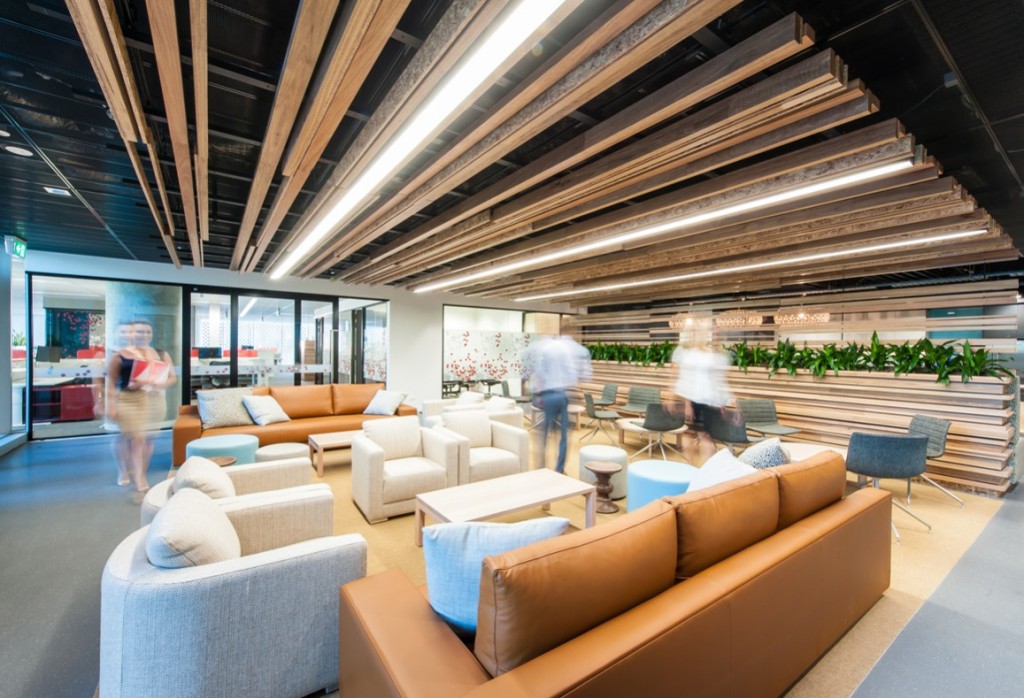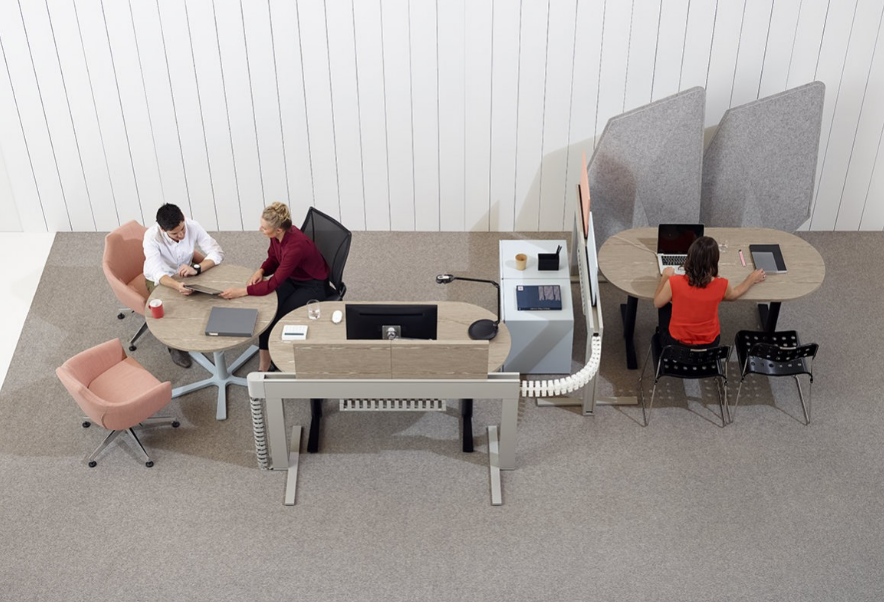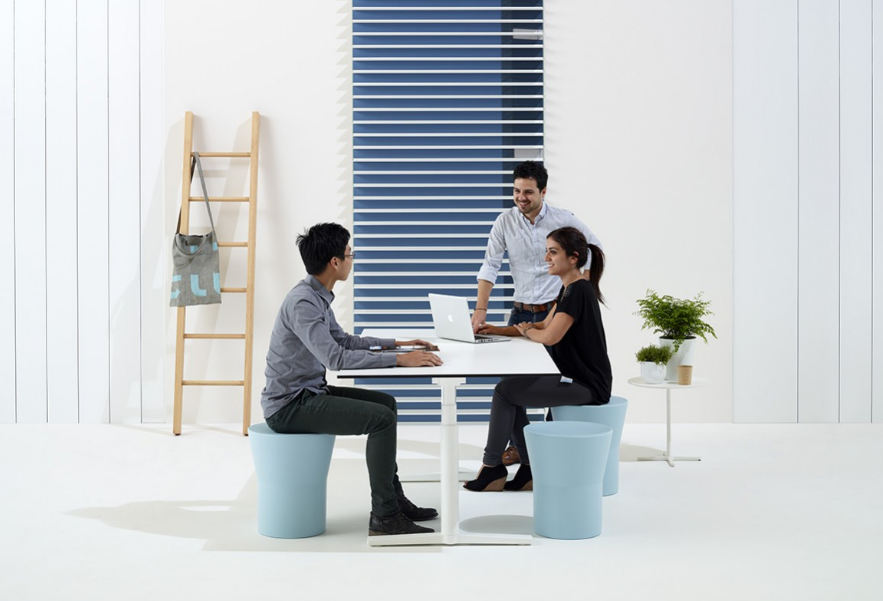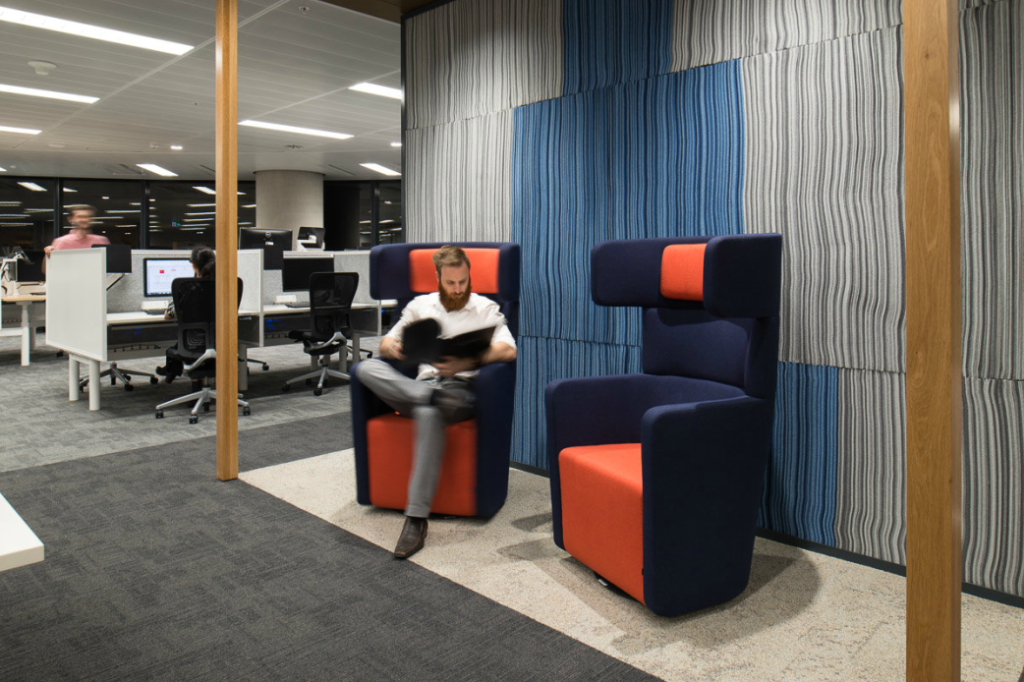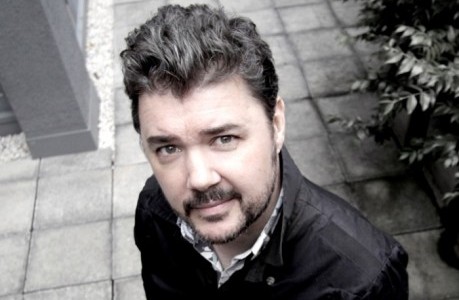
Flexible future: reimagining in the workplace
Flexible future: reimagining in the workplace
Share
Above image: Bentley’s Chartered Accountants. Image courtesy Schiavello.
Last month at DEN, Gavin Harris (senior associate and design director at futurespace), Bradford Gorman (director of Gorman/Birrell), and Keti Malkoski (principle of people and consulting at Schiavello) gathered for a discussion on the future of workspace hosted by inside’s co-editor, Jan Henderson.
Drawing on a wealth of experience, the workplace experts gave their insights on the many factors shaping our offices, the increasing integration of work and life, and how this will affect us in years to come. ADR recaps the key takeouts from the panel.
On building workplace cultures
Keti Malkoski
One thing we have to consider is the onus of responsibility on people’s health, and everyone has responsibility for their own health, but employers also have some responsibility.
In so many workplaces that I’ve been in, they’ve got all these amazing spaces, health and wellness spaces – and the organisation is trying to say to its employees, ‘we value your health,’ and its all about retention and portraying that value to the outside world. But day-to-day, employers and managers don’t necessarily allow them to use those spaces with freedom.
We need to take a ‘give-back’ position – we’re expecting people to work in a different way. We need to find new ways to connect people, when teams aren’t all working together in the same room. We need to make homes more equipped for work.
Bradford Gorman
The class-leading fit-outs that are associated with big technology companies that we all hear about, they were very insular. They were for the employees; they weren’t really for the outside world. I think what’s happening now at a corporate level is that there is a real attempt to showcase and make the corporate values, or stance, communicated through public inclusion in the fitout. So that the public areas and the reception of clients is almost as much a part of the process as it is for your employees.
Co-working is also on the rise. In the Architecture and Design Forecast, we featured the Interchange project in Camden, London, designed by Tom Dixon, which is exemplary of the type of project that’s increasingly coming to Australia. What Dixon did in the Noughties in designing the Shoreditch club – a membership club in London – they realised it became a much more popular extended office space for people because they wanted to work in a club. Interchange is taking that same notion, bringing like-minded people from different fields into the one environment, taking technology to its highest level – something we can all dream about if ever the NBN becomes a reality in Australia!
On the work/life balance and agile workforces
Keti Malkoski
It’s crucial for employers to be aware of what’s happening outside of the workspace, in the integration of life with work.
We need to understand why people need flexibility – is it a mother returning to work? Is it Gen Y wanting to work in a café, because that’s where they have the best ideas? What can flexibility do for the individual from a health perspective – physically, mentally, and for your life overall? We help employees make that choice, understanding how they can use the space, and when they can use other spaces outside of that primary work point. People want flexibility for different reasons, and will integrate work with life to different degrees. It’s never consistent, and it will change throughout your life.
Bradford Gorman
I think there is a real tendency to blur the lines completely, between what is your home life and what is your work life. And to mix it up very intentionally – not just within the corporate environment, but in the precinct where the workplace is located. What is the attractiveness of that location, and how can it become a real draw card to do what businesses are all trying to do, which is to attract talent?
Gavin Harris
Technology has given us freedom, and it’s unlocked us from traditional work settings. We can work in a café, or in hotels and airport lounges, and we can work from home. I think that freedom is great, and employees are making use of that to ask more from people – we are able to go for longer and work 24/7.
Though you’re given more freedom through advances in technology, there are added expectations that come with that. Constant connectivity with people means evolving relationships with family and work – but we do still need our own time, reflection time. How do we disconnect, or ‘downtime’ ourselves? I think there will be a shift for people to gain more discipline around that increased flexibility.
On what’s new in Barangaroo
Bradford Gorman
In Sydney, there was a very interesting thing, pre-Barangaroo. Barangaroo simply allowed for multi-storey buildings with massive floorplates, of which there are relatively few in Sydney. There was a lack of that type of office in Sydney, which is out of step with the impression of what Sydney represents as a major world city. So what that suggests is an opening of a culture. If the culture is out of step with what is actually being communicated to employees, it doesn’t matter how extraordinary your design or your facilities are.
Lend Lease is currently putting two thousand of their employees from all over Sydney under one roof at Barangaroo. And to oversee this, from a cultural perspective, they are advertising for a position called ‘experience curator’. People know Lend Lease as a builder and a provider of office space, but what people don’t often realise is that they are incredibly socially engaged, and have been since the company was founded. They are an example of a company that, I think, is in very close synchronisation between a complete understanding of the corporate value and how their corporate fitout is designed.
Gavin Harris
One of our projects is Price Waterhouse Cooper’s (PWC) client floors, improving their client experience. They already work in the agile or ABW way in their practice floors, but now they want to bring that to their clients, breaking down the traditional model of meeting rooms and seminars – which is what you would associate with PWC as an accounts-based firm. They want to work out in the open, and that is a huge shift in their culture in working with their clients.
Now that their environment is open, how do we maintain privacy when we have multiple companies in these rooms? I think that’s the challenge we’re having now. A lot of companies are wishing to engage in new ways with their clients, drawing on hospitality culture. What we’re seeing is a link between high-end hoteling experiences – an industry that is all about service to people – being applied to the workplace, adding another layer to the design.

